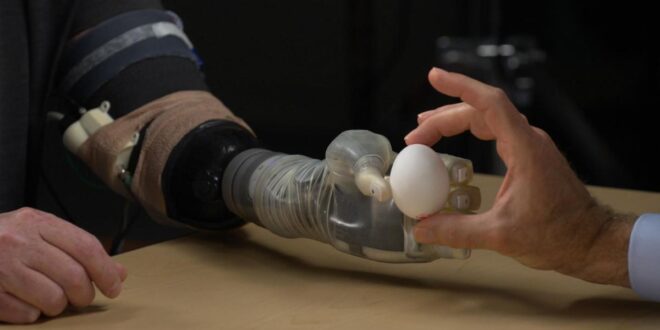The sense of touch is something we often take for granted, but it is crucial in our daily lives. For those with artificial limbs or spinal injuries, the loss of touch can greatly impact their ability to interact with the world. In order to address this issue, the Defense Department initiated a $100 million project to revolutionize prosthetic limbs. The advancements in robotics are impressive, but what is even more remarkable is how the sense of touch is being restored to individuals like Brandon Prestwood.
Prestwood’s battle began with the loss of his left hand in a workplace accident. After years of using a hook as a replacement, he decided to volunteer for experimental research involving surgery at the V.A. Through the use of electrodes implanted in his muscles and a computer that translates his brain’s electrical signals, he is now able to control a prosthetic hand with his thoughts. The sensors in the fingers of the hand are connected to nerves in his arm, allowing him to experience a basic sense of touch. This sensation, although different from his natural hand, is described as a pleasant tingling.
The research in this field has been met with skepticism due to the complexity of the human brain. However, scientists have been able to target electrical stimulation to specific neurons, proving that it is possible to return the sense of touch to individuals with prosthetic limbs or spinal injuries. In some cases, brain implants have allowed individuals to regain movement and sensation in their own limbs.
While there are still challenges to overcome, such as scar tissue build-up, this research offers hope for those who have lost their sense of touch. The ultimate goal is to restore complete functionality of the upper arm and hand, allowing individuals to regain independence and interact with the world in a meaningful way.
 Mind Uncharted Explore. Discover. Learn.
Mind Uncharted Explore. Discover. Learn.



